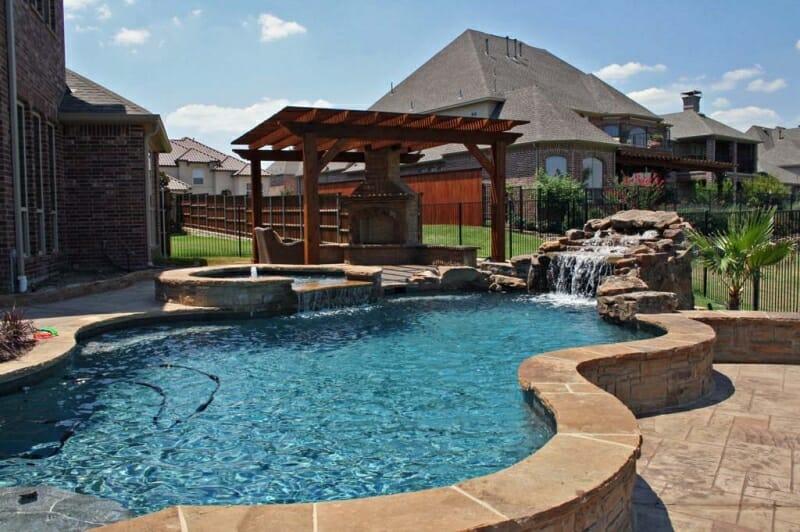Swimming pools are available in all shapes, sizes, and styles. Some are used for specific purposes, like lap pools for health and fitness, infinity pools to form a landscape architectural statement, novelty pools to reflect the owner’s personality or interests, and natural pools that blend in with the landscape.
Things that will dictate the form of your pool include: size and available space, lay of the land, budget, meeting safety codes, your home’s style of architecture, sun exposure, how you’ll use the pool and if you wish an integrated or separate spa. Discover the fundamental pool shapes, with variations within each category.
Rectangular Pools
The rectangular pool designs are one of the most frequently used in the early pool design. Its long, straight, and narrow design is suitable for swimming laps. A rectangle with rounded corners is also a well-liked design that tends to tone down the formality.
Free-form Pools
A free-form pool can tackle virtually any curvilinear shape except circles or other rounded geometric patterns. A pool with kidney shape is considered free-form. A free-form design that doesn’t adhere to any typical pool design patterns. It’s typically designed around elements in nature or to blend with nature. It is also chosen to incorporate landscaping elements like providing inlets for palm trees or shrubbery into the pool area.
Circular Pools
Circular pools are again meant for open and bigger spaces. Most covered pools are circular because it’s easier to make an enclosure for this pool shape. The sections help maintain the pool’s water quality and protect it from dust and other contamination. This pool shape is mainly used for baby and kid’s collections because it is essential to clean the pool water for more minor children.
Geometric Pools
Like free morpheme, geometric pools are built in step with your backyard’s shape but with regular and sharp geometric patterns. The collection may appear like a cascade of geometric shapes along the realm. This pool will seem like an ancient water reserve if a forest area is built. Adding stairs haphazardly will enhance the traditional beauty more. To give it a more enhanced look, particularly associated with the green tiles at the bottom. This can give it an aged mossy effect on the underside. In addition, plantations at the edges will look terrific.
Oval Pools
As the name suggests, the oval pool is simply a giant oval. This shape is typically for big pools, so you’ll frequently see it in big backyards. Old Victorian houses are accustomed to hosting one of all these. This type of pool shape is one of the best once you hear people discuss pools as a “backyard oasis.” This could be partially thanks to its size and its good with palm trees, rock formations, and waterfalls.
Lazy L in the Pool
This pool’s shape is as attractive as its name. This pool is formed because of the capital L. The vertical stem of the L is typically kept smaller and less broad. On the contrary, a part of the pool has more width and is typically where a crowd would hang around. Sometimes your yard may be a bit small, and it doesn’t look like you have enough room to support a pool. That’s why we provide such an enormous number of different shapes. It helps you see every possible way you’ll have your customized collection.
If you’re searching for the most uncomplicated swimming pool company in Dubai for your swimming pool project, then you’re at the correct place. Send your inquiry now. We are happy to assist you. Living Acre has been a renowned name within the pool contractor industry in Dubai.

